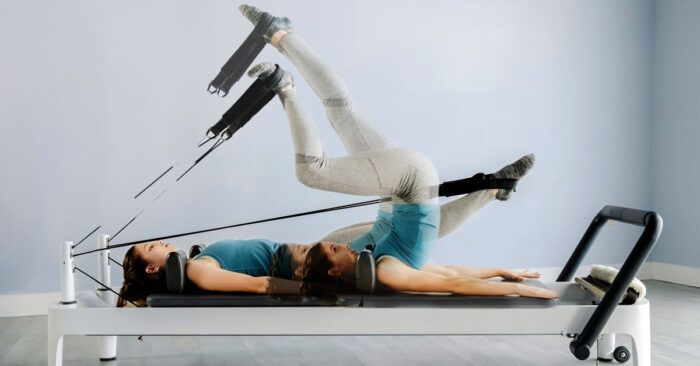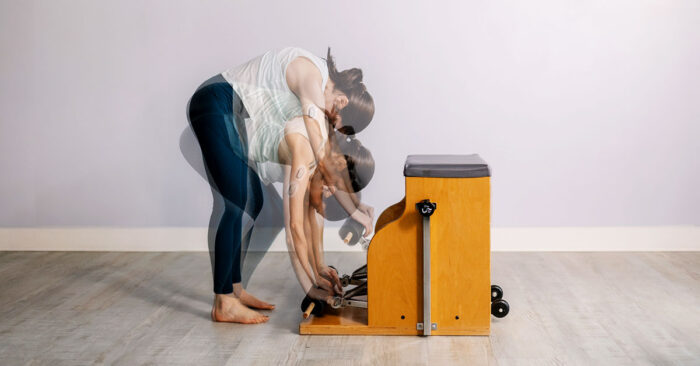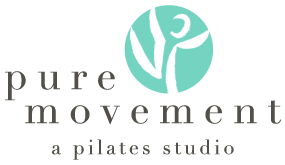What does the “re” in our Reformer, Restore, Restorative, and Rebalance classes mean? These are active recovery Pilates classes to rehydrate the fascia to support the biotensegrity required to keep us all simultaneously stable and mobile. These Pilates classes help address a complex principle and vastly overlooked system in our body: biotensegrity and that of the fascial connective tissues.
Biomechanical Tensegrity
What is it?
How the parts of your body are connected through a tension-compression network supporting the disconnected structure of your joints and masses.
Think of your body like a suspension bridge—strong, but flexible. The connected tension-compression network is the cables (muscles, ligaments, tendons, all encased in fascia). They pull and adjust under stress, i.e., movement, while gently hugging and connecting your bones, which are the disconjointed anchors or struts. We experience pain when our bones are in contact with each other. That balance of tension-compression around the disconjointed structures is necessary for stability and mobility of the body.

How does Pilates help with your body’s tensegrity?
No movement happens in isolation. Every action creates a body-wide response—nothing is limited to just one bone or muscle. This is the essence of the Pilates principle known as Whole Body Movement.
Take footwork on the Reformer, for example: when you press into the foot bar, you’re not just using your legs. You’re activating a system of tension and compression that travels through your hips, spine, shoulders, and beyond. Your entire body participates. This network of support—like the cables and beams of a suspension bridge—helps stabilize and move you as one connected structure.
That’s why Pilates emphasizes Control and Precision. You’re not slamming the carriage closed or snapping the springs. You’re working with the apparatus in both directions, creating smooth, springy, elastic movement in the body. Each exercise, when performed with this mindful attention, doesn’t just build strength; it utilizes that tension-compression network in the body—keeping it healthy and efficient.
A good tension-compression network is only as good as its fascia’s hydration, dynamic movement, length, and collagen crimp. The elasticity and springy quality of fascia affect its ability to lengthen and shorten, and its ability to pull on the muscles to create movement. Therefore, the ease and efficiency of your everyday movement are primarily determined by the quality of your body’s biotensegrity.
What Pilates classes help with biotensegrity?
To improve your biotensegrity, and with it, your quality of movement, you need to care for your fascia: the body-wide, connective tissue network that acts like your internal communication system. When fascia becomes stressed, chronically dehydrated, stuck in static positions, or loses elasticity due to aging or changes to its collagen crimp, it can no longer transmit forces effectively in the tension-compression network. This compromises how your body moves as a whole. Pilates, as a movement method, affects the distortion and hydration of fascia, and subsequently your body’s biotensegrity, to rewire the brain and rebalance the body.
We have Pilates classes specifically designed to affect the fascia distortion and return the tissue to functional form.

Roll + Restore
Level 1
Soft props manipulate the connective tissue to release chronic dehydration during the first half, followed by the reformer, which accents the newfound freedom and range of motion.
Stretch + Restore
Level 1
The class incorporates dynamic stretching to focus on the whole dynamic tensegrity shape rather than an isolated muscle. Particularly beneficial for students seeking stress relief, recovering from physical strain, or simply looking to eliminate the compression and tension felt in the body.
Restorative Mixed Apparatus
Level 2
This class isolates and addresses smaller common areas of dysfunction to restore the body as a whole tensegrity shape. Layering in proprioception and the nervous system to support more dynamic, responsive movement and build neuromuscular strength.
Re-Balance
Level 2
This class introduces focused breathwork, in addition to soft props, to build stronger proprioception to correct imbalances or distortions.
Strengthen + Stretch Reformer
Level 2
Employing the Pilates method to lessen distortions and balance your structure so that you can move with ease and efficiency, this class is a full-body workout for those looking to enhance their muscles and stamina while simultaneously increasing their muscular range of movement.
In Conclusion
Despite being nearly a century old, virtually every Pilates exercise performed encourages the synergistic activation of the body as a whole. It continues to balance the structures through precision of movement and lessens distortion because each repetition is performed with control. Incorporate fascia-focused Pilates classes to experience the body as a whole biotensegrity shape and actualize your movement potential with ease and efficiency.
Footnotes:
- Larkam, E. (2017). Fascia in Motion: Fascia-focused movement for Pilates. Handspring Publishing.
- Black, M. (2020, November 23). Whole Body Connecting Force: Biotensegrity model for movement. Madeline Black Method. https://www.madelineblack.com/movement-science/whole-body-connecting-force-biotensegrity-model-for-movement
Disclaimer:
THE INFORMATION EXPRESSED ON THIS SITE IS FOR EDUCATIONAL PURPOSES ONLY. WE DRAW ON OUR EXPERTISE AS PILATES AND MOVEMENT SPECIALISTS BY EXPANDING OUR PROFESSIONALISM THROUGH CONTINUING EDUCATION AND PERSONAL EXPERIENCES. WE AIM TO PROVIDE VALUABLE INFORMATION CONCERNING, BUT NOT LIMITED TO, PILATES, FUNCTIONAL MOVEMENT, AND FITNESS. YOU TAKE FULL RESPONSIBILITY FOR ALL DECISIONS NOW OR IN THE FUTURE CONCERNING YOUR HEALTH, LIFE, AND WELL-BEING. THIS INFORMATION IS NOT TO BE USED AS MEDICAL ADVICE EITHER TO DIAGNOSE, TREAT, CURE, OR PREVENT ANY DISEASE OR AILMENTS. YOU SHOULD CONSULT A PHYSICIAN BEFORE BEGINNING ANY EXERCISE PROGRAM.
